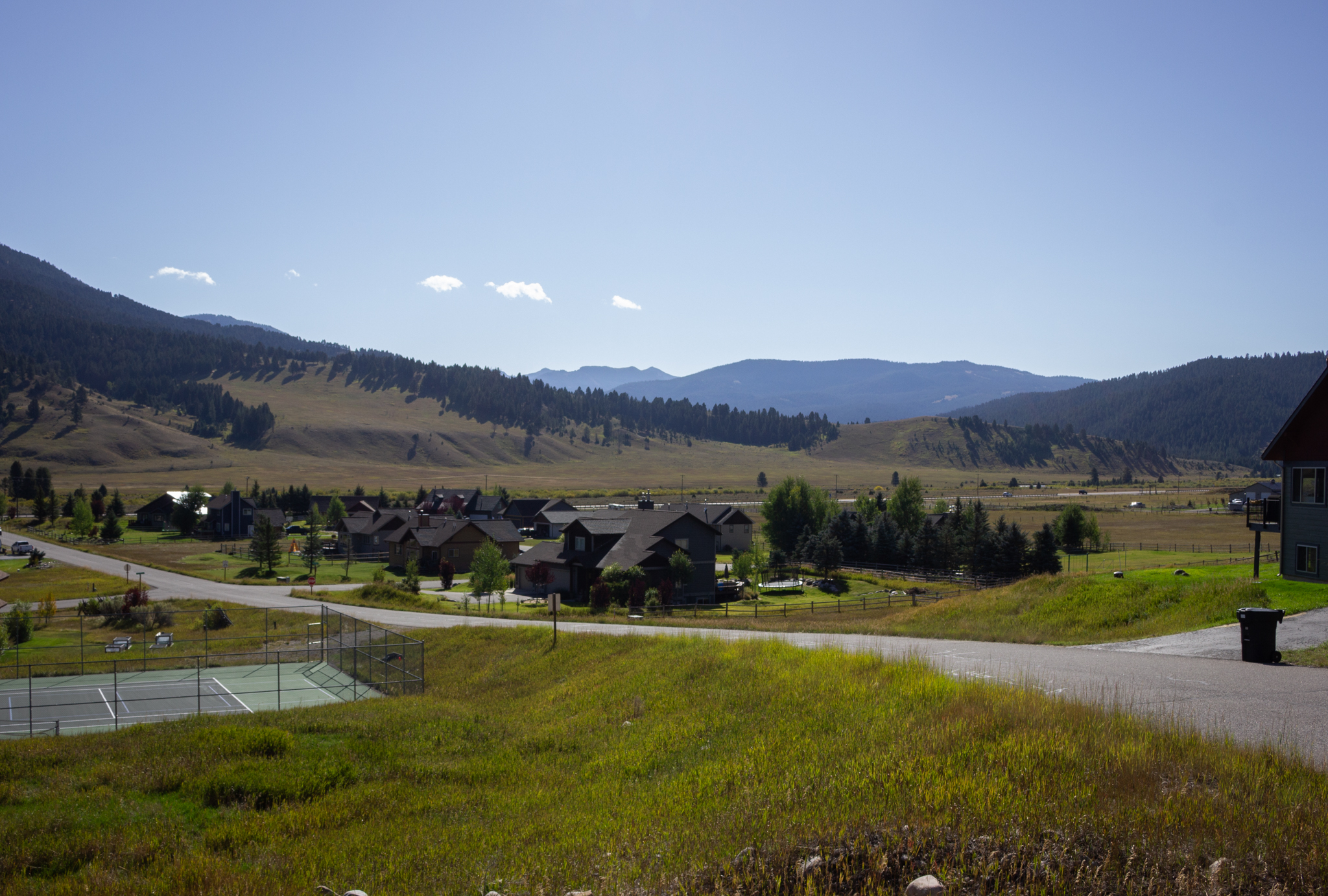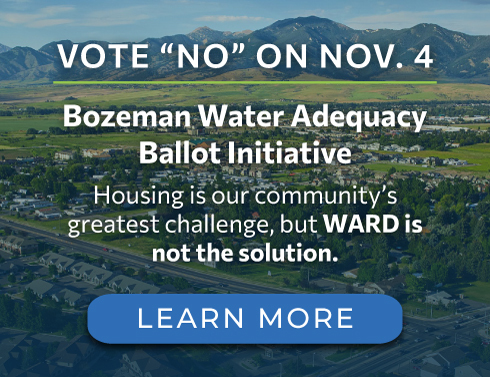Gallatin Canyon, Big Sky water and sewer districts discuss a TEDD and TIF for new sewer project
By Jen Clancey STAFF WRITER
Big Sky is trying to find ways to cover the water and sewer needs of a growing population, while protecting the Gallatin River.
The project is going to be expensive. The plan is to build a wastewater collection system for properties between the Bighorn Center just north of the U.S. Highway 191 and Montana Highway 64 junction, to Buck’s T-4. Leaders are considering financing mechanisms that ease the burden on local governments—strategies that nearby Missoula and Broadwater counties have recently established.
Leaders from government districts in Big Sky—the Big Sky County Water and Sewer District, the Gallatin Canyon County Water and Sewer District and Big Sky Resort Area District—are discussing a targeted economic development district, or TEDD, model that pairs with tax increment financing, or TIF, to get a large and expensive—but environmentally critical—project underway. The districts want to secure funding for an estimated $50 million centralized water and sewer system that would connect properties from the Bighorn Center to Buck’s T-4, but ideally would stretch beyond that section to incorporate the Ramshorn subdivision and Big Sky School District.
The environmental purpose of the sewer, to reduce nutrient loading on the Gallatin River, is not in question. The trouble is sourcing the money, and getting people on board with funding solutions.
In an Aug. 19 joint committee meeting, BSCWSD and GCCWSD discussed hurdles like earning Gallatin County Commission approval of the TEDD and TIF financing tools vital to the project. Mace Mangold, vice president of infrastructure at planning and design firm WGM Group, noted that a coalition will need to communicate the urgency of the water and sewer needs in the area.
In the meeting, Mangold said educational priorities include showing that this is not just a problem for Big Sky. “Make sure they’re understanding that this corridor’s not gonna solve itself, and [asking] why is it a completely Big Sky problem to solve that? … It needs to be a broader community effort than just [GCCWSD].”
While boundaries are still being drawn, the district would cover Big Sky developments like the controversial Quarry subdivision, connecting them all on a centralized water and sewer system and reducing reliance on septic treatment.
Septic systems run the risk of negatively impacting local waters like the Gallatin River, especially when they are poorly maintained or installed. By contrast, a sewer system would connect subdivisions and development on the same system, transporting wastewater to a centralized treatment facility like the $50 million plant just built in Big Sky.
Funding through TEDD and TIF could contribute $15 million to the project by using property taxes within the boundary’s new growth. These wouldn’t be new taxes for property owners within the TEDD boundary, instead the TIF would collect more tax revenue when changes to a land or building’s use result in an increase in property taxes. BSRAD has indicated it’s willing to contribute $20 million to help fund the project, and the remaining $30 million would come from state funds and other grants. The biggest hurdle right now is earning the Gallatin County Commission’s approval of the financing districts.
Making the case for river health
Stakeholders need to show how the economic development district fulfills a list of requirements by Montana law. The multi-pronged approach includes explaining how the district serves a diversified tenant base and fulfills a need for deficient infrastructure in the boundary. In the language of Montana law, leaders must demonstrate “the infrastructure improvement of the area is necessary for the welfare of the residents of the local government.”
One of the welfare pieces could be the protection of the impaired Gallatin River, and up until Aug. 20, the project saw opposition from environmentalists concerned about the project’s role in enabling future development near the river, and its potential to disrupt the Gallatin’s ongoing impairment study. However, in an Aug. 20 BSCWSD board meeting, the tune changed. Guy Alsentzer, executive director of river protection nonprofit Upper Missouri Waterkeeper, expressed tentative support for the sewer project, in the district’s discussion regarding steps to secure a TEDD and TIF.

“Yeah, I think you have my tentative support in terms of having those conversations and figuring out what a joint proposal would be,” he said. “I’m certainly willing to twist some arms in the conservation community with a Bozeman focus.”
Alsentzer added, however, that the “necessary horse trading” would be the district telling the county to take a stricter stance on one-off development projects that can harm the Gallatin River. His environmental organization has been vocal in opposition of the Quarry project which received approval from Gallatin County on the grounds that it would eventually become part of the canyon sewer district—an assumption that has proven uncertain.
Alsentzer said all stakeholders agree that a canyon sewer project “will do no harm” to the Gallatin River. The key for Alsentzer is finding a way to reduce harm to natural resources and factor in the needs of Big Sky.
“We’re trying to fix both the sins of the father—which is to say we have existing development, we need to figure out meaningful, science-based solutions that are going to reduce the existing load of nutrients that we know are harmful,” Alsenzter said. He added that at the same time, solutions need to factor in flexibility to help Big Sky meet its other needs. “You gotta figure out a way to have the funding sources to do it so that you have the maximum flexibility and that comes down to treatment. High-level treatment that reduces ecological risk, reduces your legal and other liabilities.”
Alsentzer’s tentative participation could bolster the argument for a county-approved financing structure.
Without a TEDD and TIF, the infrastructure deficiency will likely remain for the foreseeable future. And despite “targeted economic development” being in the name of the funding structure, Kevin Germain, BSRAD board member, assured that the TEDD would meet the need of reliable and sustainable water services at the joint meeting in August.
“This isn’t about economic development. This is infrastructure efficiency,” Germain said.
Jack Reaney contributed reporting for this story.














